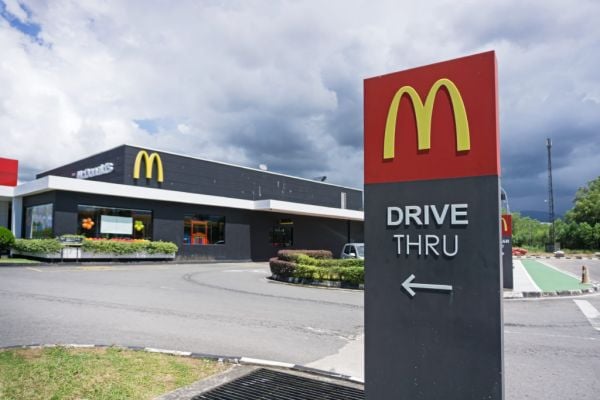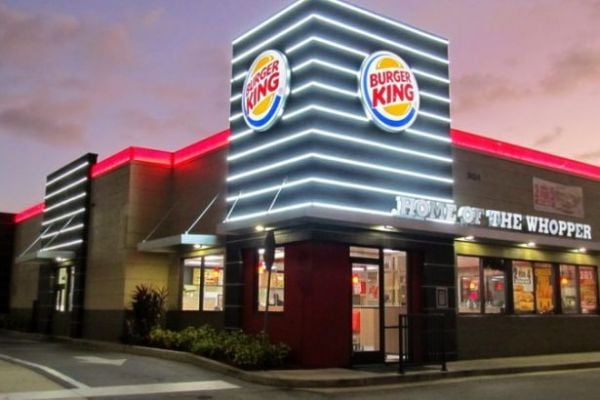It has been an interesting few months for the fast food industry. From the need for calorie information on menus, to the horsemeat scandal, much has changed. However, certain trends are holding firm, while others are beginning to alter the face of the industry. David Crann reports.
1 – The Rise of Chicken - The recent announcement by KFC of their intention to provide 1600 jobs in 40 new restaurants across the UK and Ireland is proof that fast food in general and chicken in particular has dealt with the downturn better than many parts of the sector. In Dublin there is the success of speciality chicken houses like Crackbird, while in the UK Channel 4 recently showed a 'fly on the wall' documentary series about how a late night chicken restaurant captured all facets of modern Britain.
2 - The Growth of Fast Casual – Fast Casual dining is a trend that has been building for the last few years in Ireland. Located between the speed of Fast Food and the comfort of Casual Dining, it services people in a hurry, who nevertheless want the quality of food to be good. The recent Mexican wave of burrito bars on every street corner feeds into this, with an emphasis on quality ingredients, made to order and the option of a longneck to wash it down.
3 – Blogging, Pop-ups and Social Media – This one is straight out of 'too cool for school' Brick Lane in London. Food Bloggers in London compete with each other to profile the latest taste sensation. Last year Soho has a festival – Ribstock - to find the best grilled ribs in town. The 700 tickets sold out in five minutes on twitter. Previously they had a competition for the best chili – Chili Standoff.
4 – Small Menus – This trend has been coming for a while as consumers realise that a restaurant that offers everything can hardly be able to do it all well. Having just a few menu items, done well, appeals strongly to today's market. Restaurants such as The Mulberry Tree and Rigby's in Dublin have menus so small there is almost no choice, you eat what you're given.
5 – What’s the new Pizza? – With Irish fast food still caught up in a Mexican wave (witness one of the latest burrito joints, Porco Loco, in Stillorgan), we look to London to see what the next trend in ethnic food will be. South America is strongly represented with Brazilian and Peruvian street food making inroads in trendy East London. Brazil is hosting the next World Cup and the next Olympics, so this is only going to grow. Asia is represented by Pakistani street food and ‘Chinese Bao’ - pillow-soft steamed buns typically with pork filling. Also continuing to grow are Vietnamese outlets and Japanese gyoza (dumpling) stalls. Mixed-ethnic offers such as Roti Roll (Turkish/Indian) are beginning to get noticed, while Turkish pizza or stuffed naan are replacing the 'so-over' wrap.
6 - Local Fish – We’re living on an island in the Atlantic Ocean and we have an abundance of fresh local seafood that can be sourced and added to menus to meet demand. Restaurants based in coastal fishing towns are in prime position to take advantage of this trend by sourcing fish from local fishermen. McDonaghs Seafood Bar in Galway is one example of an outlet that makes a strong selling point out of declaring where their fish is coming from.
7 – Save the Children – This is a trend that has been growing in parallel with kids' waistbands. The fears over obesity in children used to be an American problem but is now spreading throughout the world, Ireland included. Ireland has the second-highest rate of obesity in Europe, and one in four three-year-olds is overweight. The big multinationals are providing healthy options with kids' meals – McDonalds automatically include apple slices, a new smaller size French fries (1.1 ounces) and reduced sodium in their Happy Meals. This is one that all outlets need to get onboard with, pronto.
8 - Gluten-free Cuisine – As more and more people claim to have food intolerances, restaurants are learning to adapt and provide menu options that cater to this demand. Luckily for the traditional fish and chip outlet in Ireland, providing a gluten-free option is easily done by changing to gluten-free batter for fish or a gluten-free bun for a burger. This is part of a macro trend where the public want to know exactly where their food is coming from.
9 - Irish-sourced food - Local sourcing is another macro-trend that will maintain its momentum in the restaurant community in 2013. Whether purchased from local farms or grown locally, restaurants will make use of seasonal ingredients on their menus. We already see this in supermarkets where Irish-grown food is clearly signposted. In Ireland, the ready availability of good quality Irish beef, pork, fish and potatoes in particular, should allow fast food restaurants to take strong advantage of this trend.
10 - Displaying Calories and Nutritional Information - The Minister of Health was due to review the initiative for displaying calories at the end of last year and if necessary legislate. In the mean time, displaying nutritional information is encouraged on a voluntary basis. This trend will also lead to outlets providing more healthy options as consumers take more care about the health impact of what they are eating.
11 – Technology in Fast Food – The use of smartphones and tablets in ordering, customising and paying at the till will spread. Consumers will expect to be able to order online and even collect their food using a voucher on their smartphone. The savvy business operator will make sure their outlet is easy to find on restaurant locater apps like Urban Spoon and LocalEats. Social Marketing will also continue to be a major part of promoting businesses. We're not sure the new online currency Bitcoin will be accepted everywhere, but in the UK customers can already order food online with it.
12 – Customisation – People buy single tracks from iTunes instead of albums, this allows people to customise their musical collection to exactly what they want. People want to be able to do this with their food orders. The Counter Burger chain, Dundrum and Suffolk St in Dublin, make customisation their selling point. The key to making customisation work is to make sure you can give the customer options to personalise their meal, without being left with tons of unused food.









